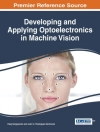This book acts as a compilation of papers presented in the 2nd Human Engineering Symposium (HUMENS 2023), held at Pekan, Pahang, Malaysia. The symposium covers the following research topics: ergonomics, biomechanics, sports technology, medical device and instrumentation, artificial intelligence / machine learning, industrial design, rehabilitation, additive manufacturing, modelling and bio-simulation, and signal processing. The articles published will be of interest to researchers and practitioners from the medical device manufacturers, healthcare, rehabilitation and sports technology.
Daftar Isi
Parameter Extraction of Muscle Contraction Signals from Children with ASD During Fine Motor Activities.- Influence of Environmental Factors and Road Characteristics in Commuting Accidents among Public University Staffs.- Human Factors: Drivers’ Speed Choice on Relatively Low–Speed Limit Roads.- Noise Risk Assessment on Noise Exposure Among Urban Rail Maintenance Workers using Personal Monitoring Method.- Design of Hose Roller for Firefighter: A Fatigue Study.- Enhancing Mental Health through Ambient Lighting.- Study of Primary Stability of Hip Implant for Semi Hip Replacement by using Finite Element Analysis.- Investigation of Mental Health Condition among Factory Worker during Covid Pandemic – A Cross Sectional Study.- Preliminary Ergonomics Analysis of Sit-Stand (STS) Desk on The Patient with Lower Back Pain Problem: A Case Study.- Risk Assessment for Manual Handling Activities in a Dairy Industry.- Developing a Survey Tool to Measure Human Factors Constructs for Personal Hearing Protector (PHP) Use among Industrial Workers – First Phase.- Fluid-Structure Interaction (FSI) Modelling in Stenotic Carotid Artery Bifurcation.- Measuring Running Performance Through Technology: A Brief Review.- Experimental Study of Gait Monitoring on Wearable Shoes Insole and Analysis: A Review.- Brief Review of Recent Study on Fluid-Structure Interaction Modeling of Blood Flow in Peripheral Arterial Disease.- Head Injury During Heading of Two Types Speak Takraw Balls: Analytical Approach.- Prediction of Atherosclerosis in Peripheral Arterial Disease Using Computational Fluid Dynamics Modelling.- The influence of body balance towards the golf putting performance.- Development of Noise Risk Assessment (NRA) and Management System.- A Short Review on Development of Table Tennis Robotic Launcher.- A Review of Biomechanical and Psychosocial Risk Factors among Workers.- Reusability study of 3D printing mould and resin casting for takraw ball launcher wheel.- Rehabilitation and Gamification Technology Device for Lower Extremities Patient: A Review.- Framework of Safety Helmet Compliance Detection and Employee Tracking by Using Quick Response (QR Code) Technology.- Knowledge and Awareness of Road Safety among University Students.
Tentang Penulis
Dr. Mohd Hasnun Arif Hassan earned his first degree in Mechanical Engineering from the Technische Hochschule Bingen, Germany in 2010. During the final year of his undergraduate study, he was offered a scholarship by Universiti Malaysia Pahang (UMP) to pursue a Master’s degree in Mechanical Engineering at the University of Malaya in Kuala Lumpur, which he graduated with distinction in 2012. After that, he embarked on his Ph D journey at UMP where he studied about the head injury sustained by soccer players due to heading manoeuvre. He completed his Ph D study in 2016, then continued to serve UMP as a senior lecturer. His research interests include finite element modelling of the interaction between human and sports equipment, instrumentation of sports equipment, and injury prevention particularly with regards to sports and traffic accidents. His work aims to apply engineering principles in sports not only to enhance the performance of an athlete, but also to prevent injuries.
Dr. Mohd Nadzeri Omar received the B.Eng. (Hons) and Ph. D. degrees from RMIT University, Melbourne, Australia, in 2013 and 2017 respectively. He is a senior lecturer with the Faculty of Mechanical and Automotive Engineering Technology, Universiti Malaysia Pahang. He is also attached to the Human Engineering Research Group which focuses on research, development and innovations in human-centered technology and products. His research interests include soft tissue modelling, sports technology, biomechanical engineering and mechatronics.
Dr. Nasrul Hadi Johari obtained his Ph D in Biofluid Mechanics from Imperial College London, United Kingdom. He is currently a senior lecturer at the Faculty of Mechanical and Automotive Engineering Technology, Universiti Malaysia Pahang. Dr. Johari’s research activities include computational modeling of blood flow, tissue mechanics and mass transport in the cardiovascular system, with applications ranging from evaluatingthe hemodynamic performance of medical devices to predict the outcome of endovascular interventional procedures. He is also interested in computational and experimental modeling of the interaction between human and sports equipment particularly in improving training aid systems and injury prevention.
Dr. Yongmin Zhong is currently an Associate Professor with the School of Aerospace, Mechanical and Manufacturing Engineering, RMIT University, Australia. His research interests include computational engineering, haptics, soft tissue modeling, surgical simulation, aerospace navigation and control, intelligent systems, and robotics.












